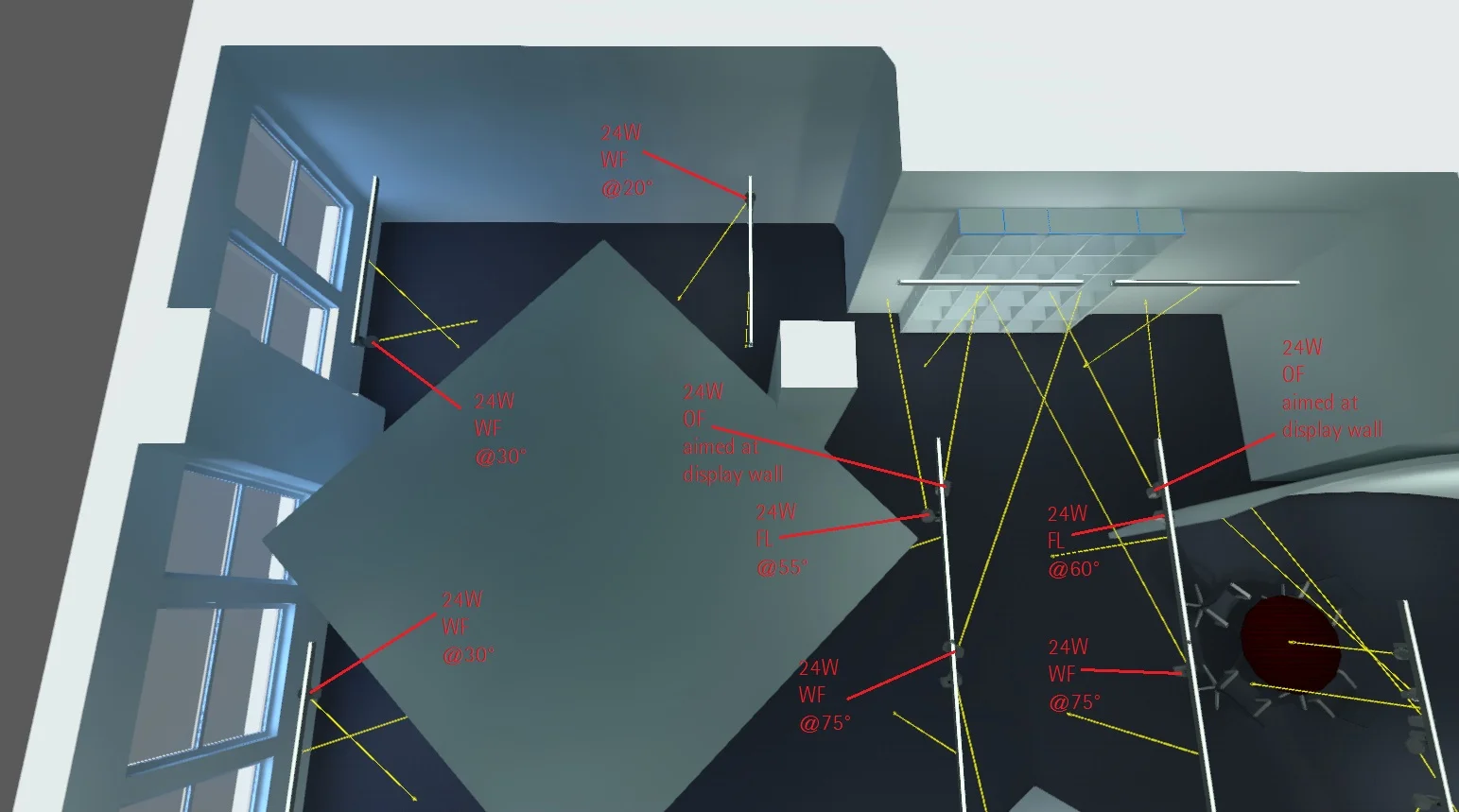Hire A Lighting Designer
Steve Jobs liked to say that what Apple did rested at the intersection between art and science. I’ve never been inside Apple, so I have no idea if that’s right, but I’ll take him at his word. What I can say is that same intersection is also an apt place for lighting design to live. Lighting Design is a practice that pulls from knowledge of physics, electrical engineering, architectural design, color theory and a host of other design disciplines to create a lighting scheme that renders spaces in the most beautiful way possible. It’s a collaborative effort, often bridging the gap between what the architect and client envisioned and the products that are on the market.
Yes, it’s a science there’s no other way to describe the lighting calculations and sophisticated renderings that are now required as part of any good lighting design practice. But it is also an art, because without the intuitive sense lighting designers develop over time for how something will look, knowing exactly which product to choose and why, design become rote. It becomes doing what the computer tells you to do, not what the eyes and mind want to see.
“Light can be sensual; it can be comforting; it can even be dangerous. It goes beyond science or nature, or even art - it is as potent as life itself.”
Lighting designers are more than simply consultants. The word ‘consultant’ connotes someone who’s opinions are just that…opinions. They might be based on experience or even a high degree of success, but at the end of the day, once they’ve consulted, their opinions can be used or not. Hiring a lighting designer is more like hiring an attorney. When most people hire a lawyer to represent them, they do so because they know very little about the law and how it is practiced. They rely on the attorney to come up with strategy and then work to execute that strategy. This is the mindset that should accompany the hiring of a lighting designer.
Lighting designers should be hired, first and foremost because most people don’t know how lighting works. This is the case now more than ever as the complexities of the digital lighting and controls have multiplied the levels of complexity over the course of time.
Questions like:
What’s the R9 value of the fixture?
How many lumens per watt?
What does the dim-to-warm curve look like at 30%?
How’s the flicker rate?
These are more scientific and engineering questions. They are important to ask, because beyond light output and wattage, most engineers don’t look beyond those basic metrics to execute a design. But the complexities get more artistic the further down the lighting rabbit hole we go.
Could this fixture be modified to delivered a 10 degree beam with a dim-to-warm chip?
How does the fixture behave when dimmed via ELV on a centralized system?
How tight is the chip binning? Will we see a difference in light color from phase 1 to phase 2 of the project?
Is the 3000K more pink or more green?
Every fixture type on the job should be the subject of at least this much scrutiny, if not much more, before a good lighting designer specifies it. We haven’t yet touched all of the real-world exercises designers do to execute their designs. Taking proposed fixtures and mocking them up to decide their precise placement and aiming, which brings me to my last point.
Aim, Focus and Programming
Designing with the electrons buzzing inside computer motherboards is one thing, but once the space is built it’s quite another to be manipulating the electrons as they become photons and begin to shoot around the designed environment. Many LD’s will tell you that this is the most fun part of the design process. Getting on ladders or in lift or on the ground and actually manipulating the fixtures to create a final focus scheme. It’s in this final, often shortest, phase of the project that the work goes from theoretical to practical. Everyone can see the light as it emerges and see what the designers intent had always been.
No matter how good AGI renderings become and IES files are enhanced, there’s still a little bit of alchemy in seeing a lighting design come alive in a space. The best analogy I can make is having a familiar dish made by a world-class chef. You’ve had sushi before, but never like this…
I am fortunate that I get to work with some of the best lighting designers in the world in my job every day. If you’re an architect, a property manager, a developer or an interior designer, bring an LD onto your next project.










